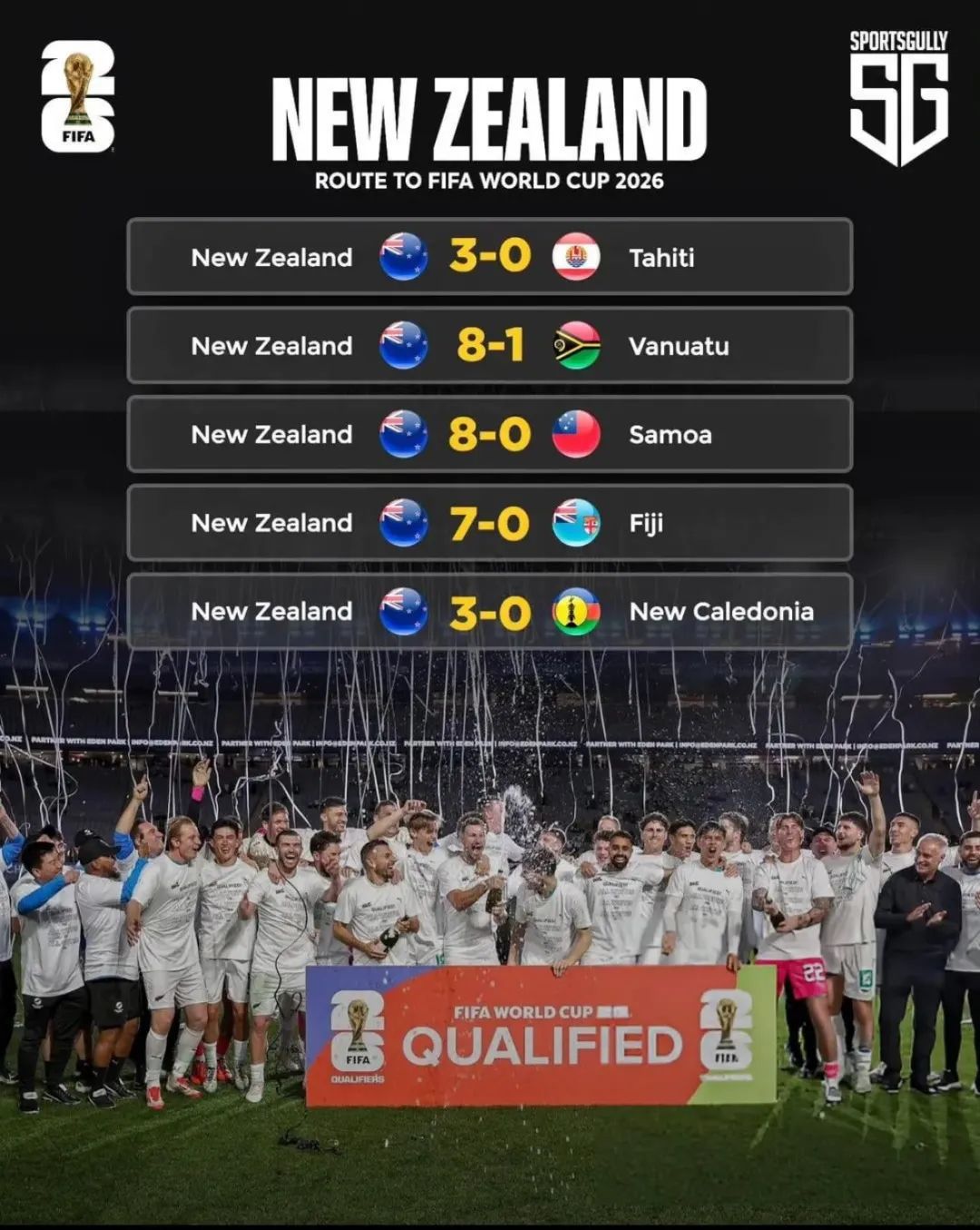Why did New Zealand guarantee the World Cup? Why should Australia remain in Asia?

The reporter reported coldly The World Cup qualifiers in March can be called a "win-win" for Oceania in the geopolitical sense. New Zealand won all five qualifiers and won Oceania's direct World Cup ticket with an overwhelming 29-1 goal difference. Australia, which has "entered Asia", is second in Group C with 13 points and is expected to qualify for the World Cup for the fifth consecutive time in Asia. In the context of the 48-team World Cup, is there a serious imbalance in the allocation of World Cup quota resources? In this context, is it worth discussing the necessity of Australia's "exit from the ocean and into Asia"?
The 2026 World Cup will be expanded to 48 teams, with the aim of making the World Cup as beneficial to the "third world" of football as possible, and allowing the new World Cup teams to vigorously promote the development of football in their countries or regions through participation bonuses, TV broadcasts, and sponsorship income. After all, the 32-team World Cup, both in terms of population and GDP, was far from reaching the goal of global influence.
The 32 teams participating in the 2022 World Cup will host countries with a total population of 1.631 billion, accounting for only 19.8% of the world's population. Of the 16 countries with a population of more than 100 million, only four have participated in the World Cup. GDP accounts for only 57.8% of the world's total. Only 14 of the 20 countries with a GDP of more than $1 trillion are participating in the World Cup. Therefore, FIFA is fully inclined to the "third world of football" in the allocation of 48 World Cup places. The most populous Asia, with four new direct qualifiers, and Africa, the second most populous, added four new places. Outside of Europe, there are six teams competing for an additional 2 play-off spots.

However, even in this dimension, when we focus on the traditional "Asia-Pacific region" of Asia and Oceania, the distribution of World Cup quota resources is obviously uneven. Australia, who were previously in the Oceania Football Confederation, have only qualified for two of their 11 World Cup qualifiers. Australia's "entry into Asia" not only reduced their pressure to qualify, but also allowed New Zealand, with a population of 5 million, to be "escorted" to the World Cup in Oceania after the expansion of the World Cup.
During the 32-team period, Australia's "entry into Asia" has been a historical issue, and its pros and cons to Asian football do not need to be traced. However, after the expansion of 48 teams, the current population of Oceania is less than 25 million, but it has one direct World Cup place. Originally, the world's 7.7 billion people excluding the host country were allocated 45 World Cup places for qualifying. There is only one with an average of 182 million, and the population quota is more than 7 times that of the Oceania Football Federation! Oceania really wins.
After all, because of the existence of Australia, a large country in the southern hemisphere in terms of population and GDP, the Oceania Football Confederation is barely a continental football confederation. After Australia "left the ocean and entered Asia", the remaining so-called Oceania, with a population of only 3‰ and a GDP of only 2.3%, occupies one World Cup place, which is obviously unfair to other continents, especially Asia. New Zealand, with a population of 5 million, only accounts for 1/240 of the world's population, and the world ranking is only around 90 (92 before the World Preliminary Tournament, and the latest ranking is 86).

Even back in Oceania itself, the serious imbalance in the distribution of resources for the World Cup is reflected in New Zealand's absolute monopoly. New Zealand's qualifiers are all ranked outside the top 150 in the world, with Samoa, the lowest ranked 186. Compared with the other 10 teams of the Oceania Football Confederation that are almost exclusively amateur players, New Zealand, which is an all-professional player, is simply a dimensionality reduction and strike. It can be said that a World Cup quota in Oceania is almost tailor-made for New Zealand.
Europe and South America, which are leading in competition, are already dissatisfied with the limited strength of Asia to occupy 8 direct places, and now New Zealand, which is not the "target of FIFA's help" in terms of football strength or population and economy, why is it the only United States? As an intercontinental football federation, Oceania does not seem to have many World Cup places, but if New Zealand is allowed to reduce the dimension and crack down on the "monopoly" of this place for a long time, it is obviously contrary to FIFA's purpose of allowing more people to enjoy the "dividend" of the World Cup.
At that time, Australia "crossed into Asia" on the grounds that Oceania was the continental football federation that should get one World Cup place, avoiding competing with European and South American teams with little chance of winning. Now that Oceania has one direct quota for the World Cup, there are many ways to make the resources of the World Cup quota more balanced between Asia and Oceania: in addition to Australia's "departure from Asia and return to the ocean", even letting Oceania and Asia compete for World Cup places in the Asian region is also one of the ways mentioned by the outside world.



Wonderfulshortvideo

GOAL! | LEGA PRO 🇮🇹 | 30/03/25








 Links
Links
 Contact
Contact
 App
App


